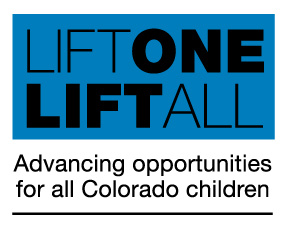Several provisions in the Colorado Constitution prevent the State and school districts from raising and expending funds necessary to establish and maintain a thorough and uniform system of free public schools. One of those provisions is the Taxpayer’s Bill of Rights (TABOR),[1] effective as of December 31, 1992, which creates comprehensive procedural barriers for state and local governments to increase either their spending or revenues.
OVERVIEW
TABOR requires that the state and all school districts obtain advance voter approval for any new tax, tax rate increase, mill levy above that for the prior year, valuation for assessment ratio increase for a property class, extension of an expiring tax, or tax policy change directly causing a net tax revenue gain.
TABOR limits the tax revenue a school district can raise to a maximum annual percentage change in fiscal year spending equal to inflation plus the annual percentage increase in student enrollments (local growth), adjusted for revenue changes approved by its voters.
Several provisions in the Colorado Constitution prevent the state and school districts from raising and expending funds necessary to establish and maintain a “thorough and uniform” system of free public schools. One of those provisions is the Gallagher Amendment,[1] passed in 1982 as part of a larger property tax measure referred by the legislature, which limits the valuation for assessment of residential real property.
OVERVIEW
Article X, section 3 of the Colorado Constitution, among other things, fixes the assessment rate (the percent of property value that is subject to taxation) for most non-residential real property at 29% of its actual value and lowered the assessment rate for residential real property from 30% to 21% of actual value. Subsection (1)(b), the “Gallagher Amendment,” requires residential assessment rates to be adjusted whenever property is revalued, currently every two years, to maintain a specific proportion of residential and non-residential assessed values.
n order to meet the requirements of the mandates of the Education Clause of the Colorado Constitution, education reform legislation, and the Colorado Consolidated State Plan, Colorado schools would need an infusion of funding far beyond that required by Amendment 23 to the state constitution. Amendment 23 was not designed to fund schools “adequately.” Rather, it was designed to reverse cuts imposed over a decade because of Colorado’s constitutional budget constraints.
OVERVIEW
Article IX, section 17 of the Colorado Constitution, “Amendment 23,” was adopted by initiative on November 7, 2000. Amendment 23 includes three principal provisions:
(a) A mandatory, minimum level of annual increases to public school funding. During state fiscal years 2001-02 through 2010-11, statewide base per pupil funding under the Public School Finance Act (PSFA) and state funding for categorical programs are required to “grow annually at least by the rate of inflation plus an additional one percentage point;” and after 2010-11, by a rate at least equal to the rate of inflation.

State and local funding for public education in Colorado is principally provided through the Public School Finance Act (PSFA) of 1994. Neither the PSFA funding formula nor the funding levels it establishes and enforces provide school districts with sufficient funding to meet the actual and foreseeable costs of educating their students in accordance with the requirements of the Education Clause of the Colorado Constitution, education reform legislation, or the Colorado Consolidated State Plan (mandated by the No Child Left Behind Act). The PSFA formula and spending levels are not based upon a valid determination of the actual costs to provide every student with an opportunity for a constitutionally adequate, quality education, or to an education that meets the standards and goals mandated by education reform legislation and the Consolidated State Plan.
OVERVIEW
The PSFA sets a financial base of support for each school district by a formula with two basic components, the district “funded pupil count” and the district “per pupil funding amount,” which when multiplied together produce the district’s “total program funding.”